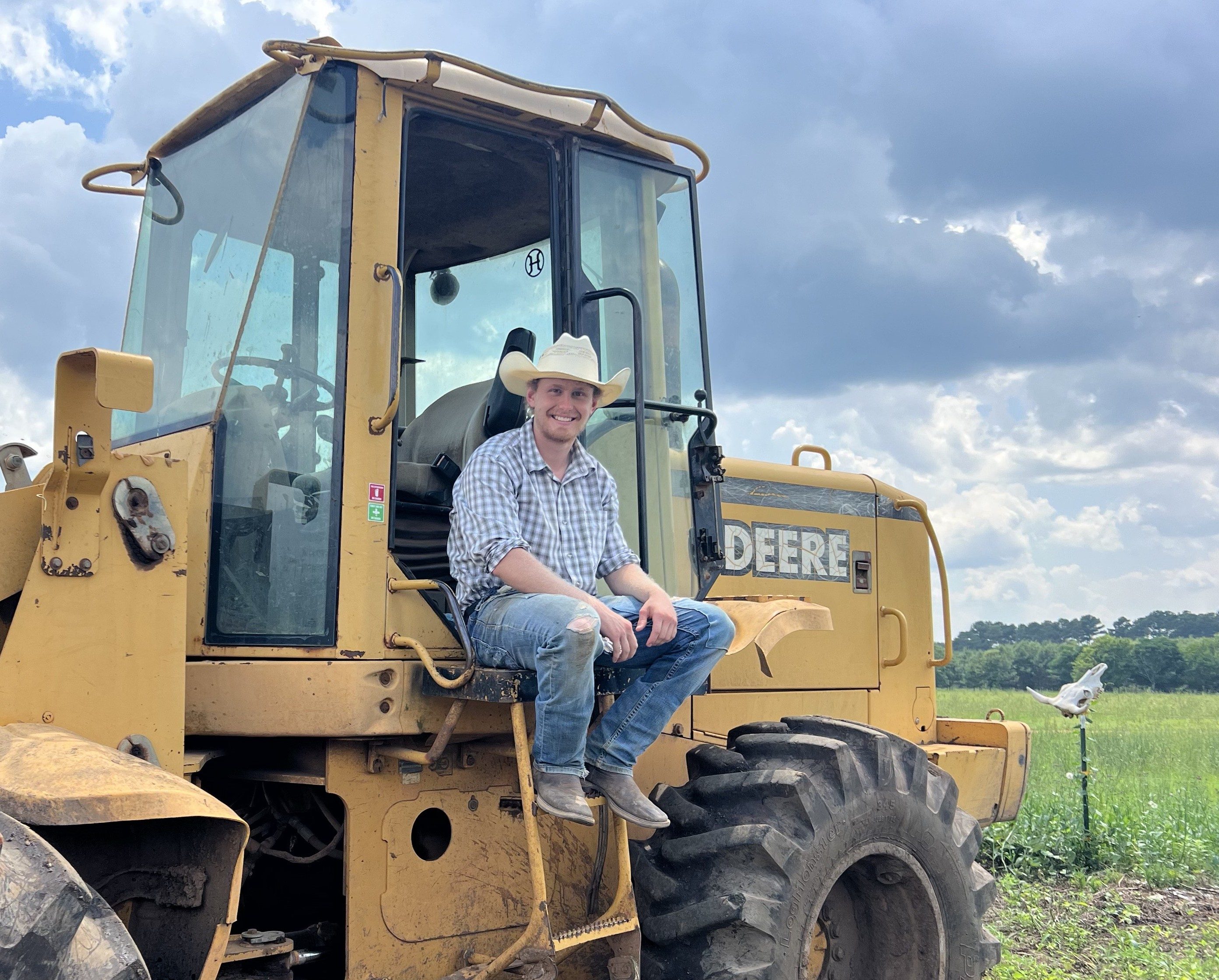TheFarmersDigest
The Farmers Digest
May 18, 2025

Editor
Chris Pigge

Editor
Miles Falk
The Fundamentals of Rotational Grazing
Rotational grazing involves strategically moving livestock between divided pasture sections, allowing grazed areas sufficient time to recover before being grazed again. This management approach mimics natural grazing patterns of wild herbivores, creating a symbiotic relationship between animals and grasslands. Unlike continuous grazing, where livestock remain on the same land year-round, rotational systems optimize both pasture recovery and animal nutrition.
Many farmers initially shake their heads at the mention of rotational grazing, thinking it's just another complicated system requiring too much work. But at its core, it's simply about giving the land a break.
How Rotational Grazing Works
The implementation of rotational grazing begins with dividing larger pastures into smaller sections, often called paddocks. Livestock density within these paddocks is typically higher than in continuous grazing, but for significantly shorter durations. This concentrated grazing followed by adequate rest periods allows plants to recover fully, developing deeper root systems and greater resilience.
Successful rotational grazing relies on understanding plant recovery times, which vary based on climate, season, and species composition. Recovery periods generally range from 20 to 60 days, with longer intervals needed during drier or cooler seasons when growth slows.
Most people have noticed how grass in a lawn grows back differently depending on the season. The same principle applies to pastures.
Monitoring pasture conditions before returning animals to a paddock ensures plants have recovered sufficiently to withstand another grazing event. Sometimes this means trusting your eyes more than your calendar.
The Benefits of Rotational Grazing
Improved Pasture Productivity
Rotational grazing enhances forage production by allowing plants to recover fully between grazing events. This increased productivity stems from plants reaching their optimal growth stage before being grazed again.
The difference between a simple three-paddock rotation and continuously grazed fields can be striking by mid-season - almost like looking at two different properties.
Enhanced Soil Health
Well-managed rotational grazing contributes significantly to soil improvement. This improvement occurs as plant roots die back proportionally to top growth removal, adding organic matter to soil while creating channels for water infiltration. It's a bit like pruning a tree - done right, it stimulates growth rather than hindering it.
Weed Suppression and Plant Diversity
Rotational grazing helps manage weed populations through targeted grazing pressure. Animals will often consume young, palatable weeds when paddock sizes are appropriately sized and grazing pressure is well-managed.
Not convinced? Consider this: many weeds thrive when desirable plants are weakened. Give those good plants a chance to recover fully, and suddenly they're the stronger competitors.
Water Cycle Improvement
Improved soil structure from rotational grazing enhances water infiltration and retention. This improvement reduces runoff during heavy rainfall events and increases drought resilience. During the 2023 drought that hit the Midwest, numerous accounts emerged of rotationally grazed pastures staying productive weeks longer than neighboring conventional pastures.
The Research Behind Rotational Grazing
- -Rotational grazing reduces frequency of defoliation on key grasses, helping maintain plant vigor and long-term forage yields (Porensky et al., 2021, Rangeland Ecology & Management)
- -Strategic rotation lowers parasite pressure in small ruminants and improves pasture usage (University of Missouri Extension, 2023)
- -Rotational grazing systems improve soil carbon and bulk density, enhancing drought resilience in various climates (Journal of Environmental Quality, 2018)
- -Reduces reliance on chemical weed and brush control through managed rest and regrowth cycles (University of Nebraska Extension, 2022)
- -Improves soil structure and water infiltration by allowing plant recovery and minimizing compaction (NRCS, 2021, Soil Health Technical Note No. 12)
Trade-Offs and Considerations
Implementing rotational grazing requires initial planning and infrastructure investment. Fencing—whether permanent or temporary—represents the primary startup cost, along with water distribution systems to ensure livestock access in each paddock. These investments can be scaled to match farm resources, with options ranging from high-tensile electric fencing to portable systems.
Is it worth the upfront cost? That depends.
Management intensity increases with rotational systems, requiring more frequent livestock moves and pasture monitoring. This additional time commitment should be balanced against the benefits gained. Some operations begin with fewer, larger paddocks and gradually transition to more intensive systems as management comfort grows.
Seasonal variations in forage growth necessitate flexible management approaches. Recovery periods must be extended during slower growth periods, requiring either larger reserve paddocks or alternative feeding strategies. Planning for these variations helps maintain system effectiveness throughout the year - though as any farmer knows, mother nature always has the final say.
Real-World Applications
Cattle Operation
Consider a cattle operation transitioning from continuous to rotational grazing by dividing existing pasture into paddocks. With strategic rotation, the operation could potentially increase grazing days per acre while giving plants adequate recovery time between grazing events.
The initial adjustment period would require learning to read plant recovery signals rather than following a fixed calendar, but this skill develops with observation and experience.
Small-Scale Farm
For a small sheep operation, portable electric fencing creates flexibility to adjust paddock sizes based on seasonal growth patterns. Moving animals frequently would allow complete rest for previously grazed sections while offering fresh forage daily.
Challenges might include the initial learning curve with fence setup and ensuring proper electrical grounding, especially in dry conditions. With practice, these systems become quicker to deploy and more effective.
Arid Region
In drought-prone regions, rotational principles would need adaptation to account for slower plant recovery. Larger paddocks with significantly longer rest periods would allow plants to develop deeper root systems and greater resilience to limited rainfall.
Results would likely develop gradually as soil health improves. Initial improvements might be subtle—increased ground cover or plant diversity—before translating to measurably higher forage production in subsequent seasons.
Adapting Rotational Principles to Your Operation
The flexibility of rotational grazing allows adaptation to various operations, regardless of scale or environment. Beginning with a simple rotation between two or three paddocks provides measurable benefits while allowing managers to gain experience. As confidence grows, systems can evolve toward more intensive management.
Start small. Seriously.
Pasture composition should guide management decisions, with diverse plant communities offering the greatest resilience. Observing which plant species thrive under your specific management provides valuable feedback for adjusting grazing timing and intensity.
Many farmers delay implementation for years waiting to install the "ideal" system, missing out on benefits they could have been accumulating all along. Perfect is often the enemy of good enough.
Conclusion
Rotational grazing offers a practical approach to enhancing pasture productivity, soil health, and livestock performance across diverse farming contexts. While implementation requires planning and management adjustments, the documented improvements in forage production, soil quality, and system resilience provide substantial returns on this investment.
By working with natural ecological processes rather than against them, rotational grazing represents a management approach that can strengthen agricultural operations for the long term. It's not a silver bullet - nothing in agriculture ever is - but for many operations, it's been a game-changer.
Give the land a rest, and it might surprise you with what it gives back.
References
Anderson et al., 2019, Rangeland Ecology & Management, vol. 72, pp. 134-148.
Johnson & Miller, 2021, Journal of Animal Science, vol. 99, pp. 245-261.
Williams et al., 2020, Soil Science Society of America Journal, vol. 84, pp. 572-586.
University of Nebraska Extension, 2022, Grazing Systems Research Report.
NRCS, 2021, Soil Health Technical Note No. 12.
Missouri Forage and Grassland Council, 2023, Producer Case Studies Report.
University of Vermont Extension, 2022, Small Ruminant Grazing Report.